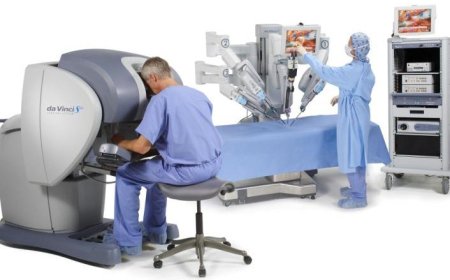Which Shoulder Brace Fits You Best — Left or Right?
Choosing a shoulder brace isn’t just about picking the right size or brand — it also often involves picking the correct side (left or right) and understanding when a universal brace might suffice. In this article, we’ll cover:

When you’re choosing a shoulder brace, it’s not just about size or material — you also need to think about which shoulder (left or right) the brace is meant to support. The side matters because:
-
The left and right shoulders are mirror images anatomically. A brace shaped or pressed for one side may not align properly on the other side.
-
Straps, buckles or support panels in many braces are arranged so that they wrap in a particular direction (for example: across the chest, over the back, under the arm) which is tailored to one shoulder side.
-
If you pick a brace meant for the opposite side (i.e., wearing a “right‑shoulder” design on your left shoulder), you may end up with poor support, discomfort, straps digging in or slipping, or restriction of movement.
-
Some braces are labelled as “universal (left or right)”, meaning they can be adapted. Others are strictly left‑ or right‑specific. You’ll get better anatomical fit if you match the side correctly.
How to decide which side you need
Here’s how to choose the right side for your brace:
-
Identify which shoulder is injured or needs support.
If your pain, strain or instability is in your left shoulder, you’ll generally want a brace designed for the left side (or a universal one that explicitly supports either side). Similarly for the right shoulder. -
Check the product description or label.
Look for terms like “Left shoulder brace”, “Right shoulder brace”, “Fits left or right shoulder”, or “Universal”. This will tell you if the side is fixed or flexible. -
Consider your condition and severity.
-
For mild support (muscle ache, post‑exercise soreness) a universal brace may suffice.
-
For more serious support (after an injury, dislocation, rotator cuff strain) a side‑specific brace may provide better fit and stabilisation.
-
-
Think about both shoulders.
If you have issues in both shoulders (e.g., overuse, bilateral weakness), you may choose two braces (one for each side) or a truly universal brace that can switch sides.
What types of shoulder braces exist (and how they relate to left/right)
Here are categories of braces and how side‑specific they tend to be:
-
Universal / Ambidextrous Braces: These are designed to fit either shoulder (left or right) using adjustable straps and a symmetrical design. They’re convenient if you don’t know which side might flare up, or you want one brace for both. For example:
Balarka Shoulder Support Belt Adjustable Stretch Strap Wrap – labelled for “Right / Left Shoulder Support”.
MILLOR Neoprene Shoulder Sling Support Wrap Left/Right – shows “Left/Right” in its description.
These give flexibility but may not be as tailored as side‑specific models. -
Left‑specific or Right‑specific Braces: These are built for one shoulder side and often have asymmetric straps or padding. They may provide a more precise fit for that side. For example:
Trv Shoulder Support Strap Pain Injury Gym Brace Belt Left/Right – labelled “Left Right” in its tag, so you choose the side.
Side‑specific braces are good if your condition is on a known side and you want optimal alignment. -
Heavy Immobiliser / Post‑Injury Braces: These may require a fixed side because the immobiliser structure (straps over the torso/back) is rigid. It’s especially important here to get the correct side.
Fit & use tips (regardless of side)
-
When you put on the brace, it should feel snug but not too tight. You want support without restricting circulation or causing discomfort.
-
After fastening, gently move your arm / shoulder through light motion to check that:
-
The brace stays in place.
-
Straps don’t dig into your skin or armpit.
-
It doesn’t cause excessive tightness or restrict basic functional movement more than intended.
-
-
If you’re using a side‑specific brace, make sure the strap layout corresponds with that side: e.g., if it is for the left shoulder, a chest strap may route under your right arm and across your chest to the left side; if you wear it on the right instead this strap might twist or misalign.
-
If you’re using a universal design, you’ll still want to orient it correctly (e.g., strap going back or front as indicated) to fit your specific side.
-
Wear it over a thin layer of clothing or skin that is clean and dry to avoid irritation.
-
If you experience increasing discomfort, numbness, or excessive restriction of motion — remove and readjust. A brace should help, not worsen symptoms.
Which side should you choose? Real‑life decision tree
Here’s a quick decision tree to help:
-
Step 1: Which shoulder is feeling pain/unstable?
→ Left → look for “Left shoulder” or “Fits left or right”.
→ Right → look for “Right shoulder” or “Fits left or right”. -
Step 2: Is the brace clearly labelled for one side or both?
→ If labelled “Left only” and your issue is left → good.
→ If labelled “Right only” and your issue is left → wrong side → choose another.
→ If labelled “Fits left or right” → you have flexibility; just ensure sizing and straps fit your body. -
Step 3: What severity of support do you need?
→ Mild support (aches, strain) → universal may be fine.
→ Serious support (post‑injury, instability) → side‑specific brace likely better. -
Step 4: Make sure you choose correct size/chest measurement/strap length etc.
Even the correct side won’t work if size is wrong.
Quick product examples
Here are some brace products you could consider:
-
Balarka Shoulder Support Belt Adjustable Stretch Strap Wrap: Universal “Left/Right” model, budget‑friendly.
-
MILLOR Neoprene Shoulder Sling Support Wrap Left/Right: Side‑flexible, labelled for “Left/Right”.
-
Trv Shoulder Support Strap Pain Injury Gym Brace Belt Left/Right: Side‑choice required (“Left/Right”) indicated.
-
United Medicare Shoulder Support Left/Right (C‑11): Specified “Left/Right” choice, more premium.
-
Vissco Next Shoulder Support Belt: Known brand; check if side‑specific or universal when ordering.
-
Shoulder Support s (Beige): Generic support model; verify side fit & size.
Final take‑home
-
Yes, the side (left vs right) does matter when choosing a shoulder brace — don’t assume a brace will fit either side unless it says so.
-
Match the brace side to the shoulder that needs support. If your right shoulder has the issue, choose a right‑side model (or a truly universal one); same for the left.
-
Fit, comfort and strap orientation are just as important as side. A well‑fitting brace on the correct side will be far more effective than a mismatched one.
-
If you’re ever unsure (especially after a significant injury or surgery) it’s wise to consult a medical professional (orthopaedic/physio) for advice on brace type, side, and use.























